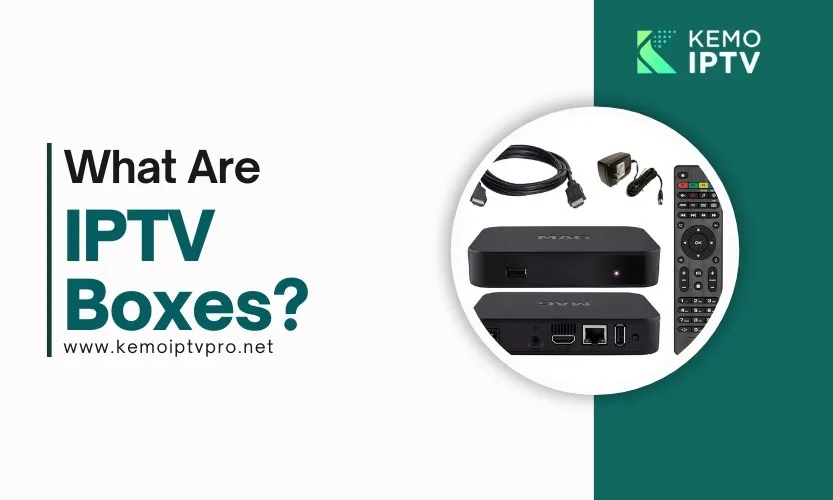The way we watch television has fundamentally changed. Gone are the days when you needed a bulky cable box or satellite dish to access your favorite shows. Enter IPTV boxes – the modern solution that’s revolutionizing home entertainment by delivering television content directly through your internet connection.
With over 250 million IPTV subscribers worldwide in 2025 and the market valued at approximately $187 billion, IPTV technology represents a massive shift in how people consume television content. But what exactly is an IPTV box, and how does this technology work? This comprehensive guide will break down everything you need to know about IPTV boxes, from the technical basics to practical considerations for getting started.
Understanding IPTV: The Foundation
Internet Protocol Television (IPTV) is a system that delivers television content through internet networks rather than traditional cable or satellite signals. Unlike streaming services that operate over the open internet, IPTV typically runs on managed networks controlled by service providers, ensuring higher quality and more reliable service.
The key difference lies in the delivery method. While traditional broadcasting sends all available channels to your home simultaneously (whether you’re watching them or not), IPTV uses a “pull” model – only sending the specific content stream you’ve requested. This makes IPTV incredibly efficient and allows for interactive features impossible with traditional broadcasting.
IPTV services typically offer three main types of content:
- Live Television: Real-time streaming of news, sports, and scheduled programming
- Video on Demand (VOD): Extensive libraries of movies and TV shows available instantly
- Time-shifted TV: Features like catch-up TV and network DVR that give you control over when you watch
What is an IPTV Box?
An IPTV box is a specialized set-top device that serves as the bridge between your internet connection and your television screen. Think of it as a modern cable box designed specifically for internet-delivered content. The device connects to your home network (via Ethernet or Wi-Fi) and to your TV (typically through HDMI), converting streaming IPTV signals into audio and video output your television can display.
Unlike general-purpose streaming devices, IPTV boxes are purpose-built for television viewing. They’re optimized to provide a smooth, cable-like channel surfing experience with quick channel changes, integrated program guides, and reliable stream handling. Many come with dedicated remote controls and user interfaces designed specifically for navigating live TV channels and on-demand content.
IPTV Box vs. Other Streaming Devices
While you can access IPTV services through various devices like Android TV boxes, smart TVs, or streaming sticks, dedicated IPTV boxes offer several advantages:
- Optimized Performance: Purpose-built for IPTV streaming, often providing smoother playback
- Simplified Interface: TV-focused user experience without distracting apps or features
- Better Live TV Experience: Faster channel switching and more traditional TV navigation
- Provider Integration: Often pre-configured by IPTV service providers for plug-and-play setup
How Does an IPTV Box Work? The Technical Process
The technology behind IPTV boxes involves several sophisticated processes working together seamlessly:
1. Internet Streaming Instead of Broadcasting
When you select a channel or on-demand show, your IPTV box sends a request over the internet to your service provider’s servers. Unlike traditional TV that tunes into broadcast frequencies, IPTV retrieves content digitally in real-time through your broadband connection.
2. Content Delivery and Decoding
The IPTV service breaks video content into small data packets and transmits them over the network using internet protocols. These packets travel through your ISP’s network to your home, where the IPTV box reassembles and decodes them into watchable audio and video. The box essentially decodes a continuous internet video stream on the fly, displaying it on your TV with minimal delay.
3. Multicast vs. Unicast Technology
For live television, many IPTV systems use IP multicast technology – one of IPTV’s most significant technical advantages. This means a single stream from the provider can serve unlimited viewers watching the same channel, making it incredibly bandwidth-efficient. When you tune to a channel, your IPTV box joins the multicast group for that specific channel.
For on-demand content, unicast streaming is typically used, creating a unique stream delivered directly to your device.
4. Signal Conversion and Display
The final step involves converting the processed digital stream into a standard video output format (like HDMI) that your TV can understand and display. Modern IPTV boxes can handle high-definition and even 4K content if your internet connection has sufficient bandwidth.
IPTV vs. Traditional Cable and Satellite TV
The fundamental differences between IPTV and traditional television services go beyond just the delivery method:
Delivery Infrastructure
- Traditional TV: Uses dedicated physical media like coaxial cables or satellite signals broadcast to dishes
- IPTV: Delivers content through your existing broadband internet connection
Content and Packaging
Traditional cable and satellite providers typically offer set channel packages by tier, often region-specific. IPTV services tend to offer broader, more diverse channel selections, including extensive international content that would be difficult or expensive to access through traditional providers.
Quality and Reliability
Cable and satellite can deliver consistent high-quality video regardless of your internet speed, but they can be affected by weather (satellite) or line issues (cable). IPTV quality directly correlates with your internet connection quality – excellent broadband can mean superb picture quality, including 4K streaming, but network slowdowns can impact viewing.
Interactivity and Features
IPTV’s internet-based nature enables true two-way interactivity. Features like pausing live TV, choosing camera angles for sports, interactive program guides, and seamless on-demand integration are built into the IPTV experience from the ground up.
Key Benefits of IPTV for Consumers
Extensive Content Selection
One of IPTV’s most compelling advantages is the vast array of available content. Many IPTV services offer hundreds or even thousands of channels, including international programming from around the world, niche specialty channels, and comprehensive on-demand libraries with thousands of movies and TV series.
Flexibility and Control
IPTV blends the familiarity of live television with the convenience of internet streaming. You’re not tied to rigid broadcast schedules – aside from live events, you can watch shows on your schedule. Many services include DVR functionality and catch-up features that let you replay content from earlier in the day or week.
Cost-Effectiveness
IPTV subscriptions are often significantly more affordable than traditional cable packages. Some IPTV plans cost as little as $20 per month for extensive channel lineups that would cost much more through cable providers. Additionally, many IPTV services allow multiple simultaneous streams on different devices without additional fees.
High-Quality Streaming
With a robust internet connection, IPTV can deliver exceptional video quality up to 4K Ultra HD resolution. Because some IPTV systems operate on managed networks, they can avoid heavy compression, resulting in crisp picture quality that rivals or exceeds traditional broadcasting.
Requirements and Important Considerations
Internet Connection Requirements
Since IPTV relies entirely on internet connectivity, a fast and stable broadband connection is essential. For HD streaming, you’ll typically need at least 20-25 Mbps, with higher speeds required for multiple simultaneous streams or 4K content. Slower connections may limit you to standard definition or cause frequent buffering.
Data Usage Considerations
Streaming hours of IPTV consumes significant data. If you have metered internet or data caps, be mindful that heavy IPTV usage can consume hundreds of gigabytes per month. Unlimited internet plans are ideal for regular IPTV viewing.
Getting Started with IPTV
Choosing an IPTV Service
Start by researching legitimate IPTV providers in your area. This might be your existing internet provider offering IPTV packages, or established independent services. Consider factors like:
- Channel lineup and content selection
- Video quality and streaming reliability
- Customer support and device compatibility
- Pricing and contract terms
Hardware Selection
You can purchase IPTV boxes through online retailers or directly from service providers. Popular models include Formuler, MAG boxes, and BuzzTV devices, typically ranging from $50-$150. Many modern smart TVs, streaming sticks, and Android TV boxes can also run IPTV applications.
Setup and Installation
Setting up an IPTV box is generally straightforward – connect it to your TV and internet, then enter your subscription credentials. Many providers offer pre-configured devices or setup assistance to simplify the process.
The Future of Television is Here
IPTV boxes represent more than just another way to watch TV – they’re at the forefront of a fundamental transformation in how we consume entertainment. By combining the vast content selection of the internet with the familiar experience of traditional television, IPTV offers the best of both worlds.
With rapid global adoption, continuous technological improvements, and increasing affordability, IPTV is positioned to become the dominant television delivery method worldwide. Whether you’re looking to cut costs, access international content, or simply want more control over your viewing experience, an IPTV box could be your gateway to the future of television entertainment.
As traditional cable and satellite services continue to decline and internet infrastructure improves globally, IPTV boxes are not just changing how we watch TV – they’re defining what television will become in the digital age.




